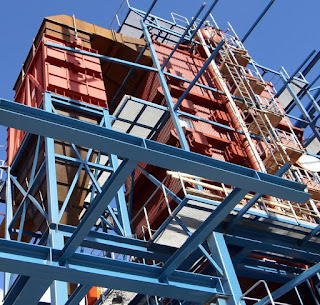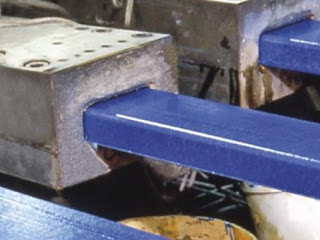A basic definition of Fiber Reinforced Polymer (FRP) is a composite material comprised of fiber (aramid, carbon, or glass – being the most common) and polymer resin commonly referred to as epoxy. FRP is a generic term for Aramid Fiber-Reinforced Polymer (AFRP), Carbon FiberReinforced Polymer (CFRP), and Glass Fiber-Reinforced Polymer (GFRP). FRP used for strengthening civil structures traces its roots to the mid-1980s with the first installations occurring in Europe and Japan. Today, thousands of rehabilitation projects around the globe have employed these composites to add strength to concrete, masonry, timber, and steel structures.
The motivation to develop FRP for civil structures was to provide an alternate to conventional strengthening methods. Some of the conventional methods include steel plates epoxy-bonded to concrete, steel plates bolted to concrete, and steel plate jacketing of round, square, and rectangular concrete columns. The obvious disadvantage of conventional methods is that they are heavy and difficult to install. In addition, once steel yields, it will stretch with little strength gain. However, FRP is linear-elastic to failure. It has roughly the same tensile modulus as steel; thereby, making it a nice alternative to steel.
Contact Process Systems & Design to discuss more about the use FRP in industrial process design and construction. Visit https://www.processsystemsdesign.com or call (410) 861-6437.
Providing information on bulk materials handling (liquid and solid), plant systems engineering, specialty machine design, and process control engineering. Industry focus for the following posts are bulk handling systems, E-Liquid (E-Juice) manufacturing equipment, Biomass, plastics and polymers. For more information, visit PS&D or call (410) 861-6437
Friday, January 19, 2018
Tuesday, January 9, 2018
Composite Materials for Industrial Construction and Process Equipment
 |
| Composite Materials for Industrial Construction. |
Typically, a composite material is made of reinforcement and a matrix. The reinforcement material provides the mechanical strength and transfers loads in the composite. The matrix binds and maintains the alignment or spacing of the reinforcement material and protects the reinforcement from abrasion or the environment. The combination of a matrix material with a strong reinforcement material enables lighter weight products relative to monolithic materials (like metals) with similar or better performance properties. Resin and fibers can be combined in a multitude of ways and further processed through a series of forming and consolidation steps. The specific manufacturing technique is dependent on the resin material, the shape and size of the component, and the structural properties required by the end use application.
The landscape of manufacturing segments and systems that benefit benefit from the lower cost, high strength and stiffness, corrosion resistant, and lightweight composite materials is growing. Successful industrial implementations for composites include material handling systems, compressed gas storage systems, heat exchangers, pipelines, geothermal energy equipment, turbine blades, structural materials for buildings, power generation flywheels, support structures for solar systems, and shipping containers, just to name a few.
For more information on applying composite materials for industrial construction or process equipment, contact Process Systems & Design at (410) 861-6437 or visit https://www.processsystemsdesign.com.
Subscribe to:
Comments (Atom)
